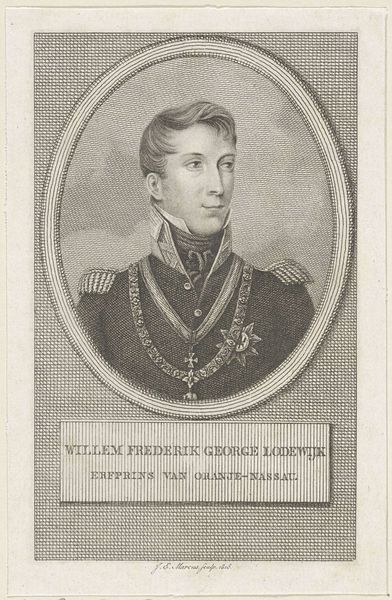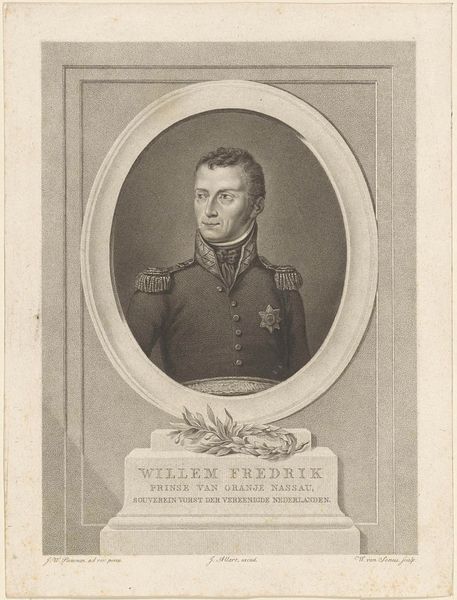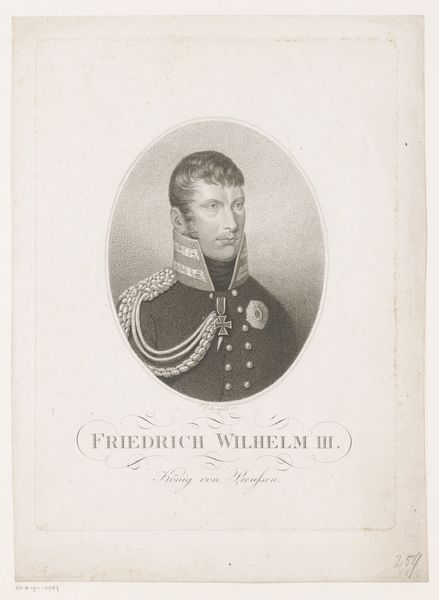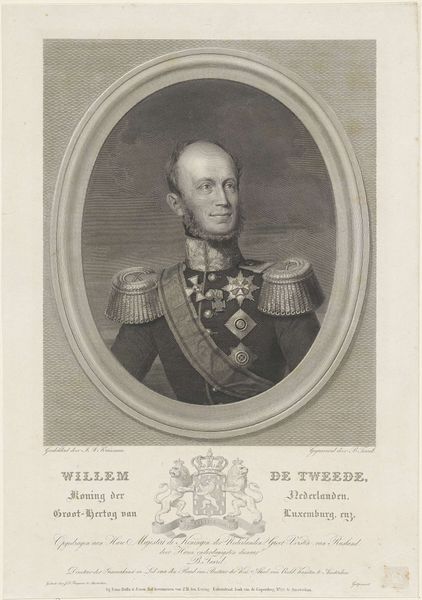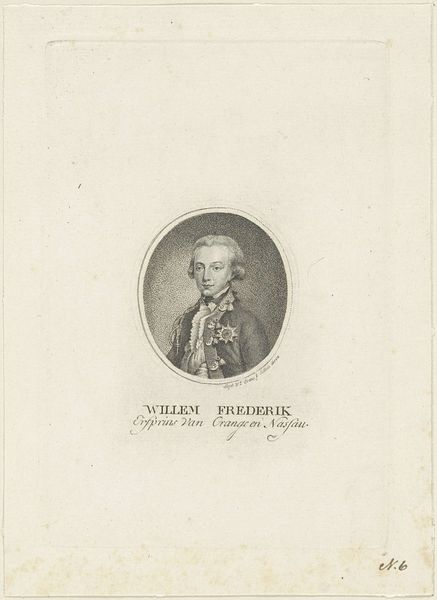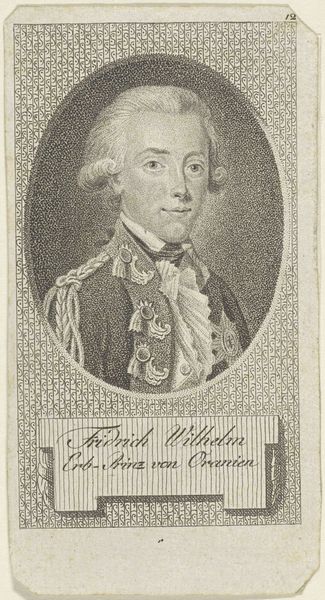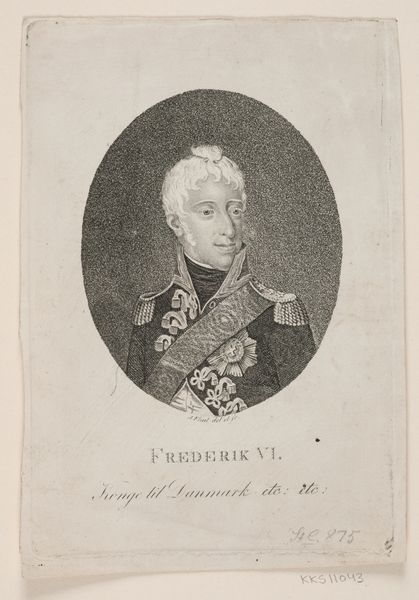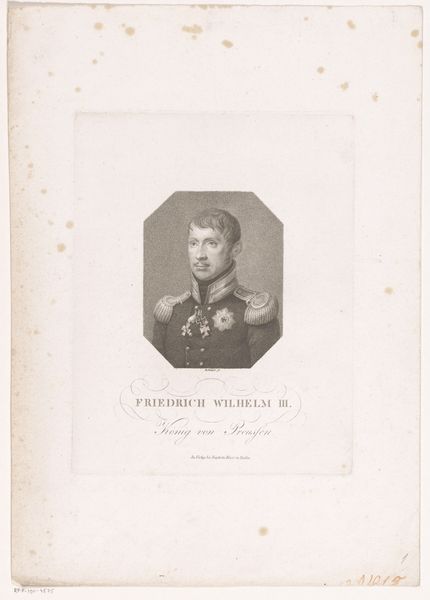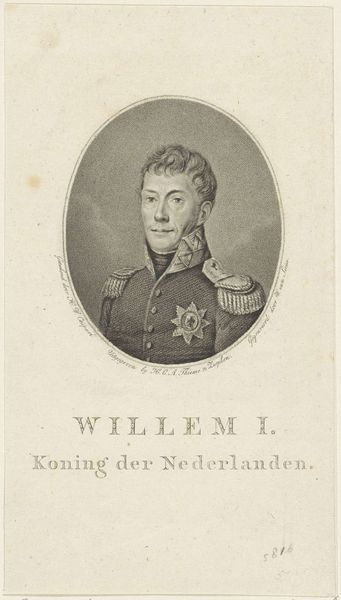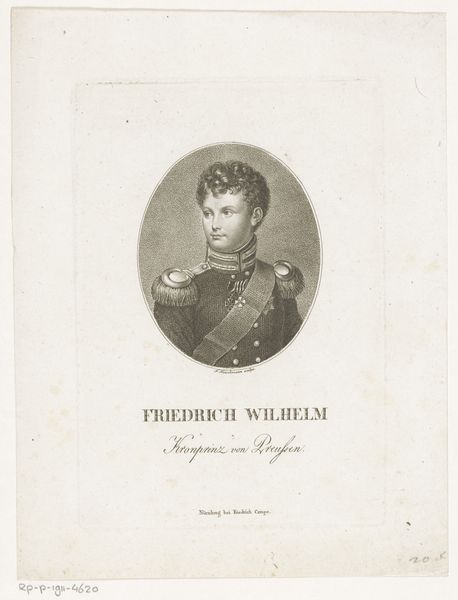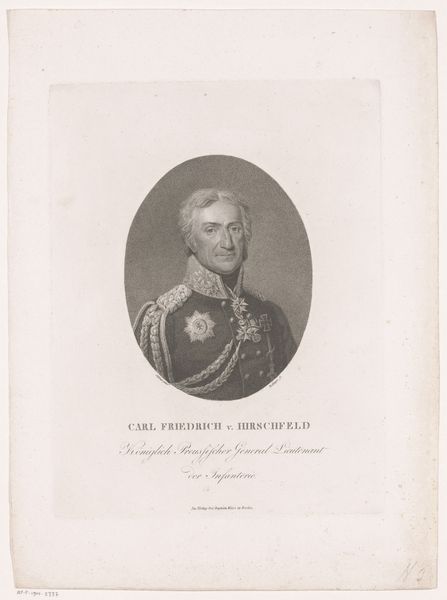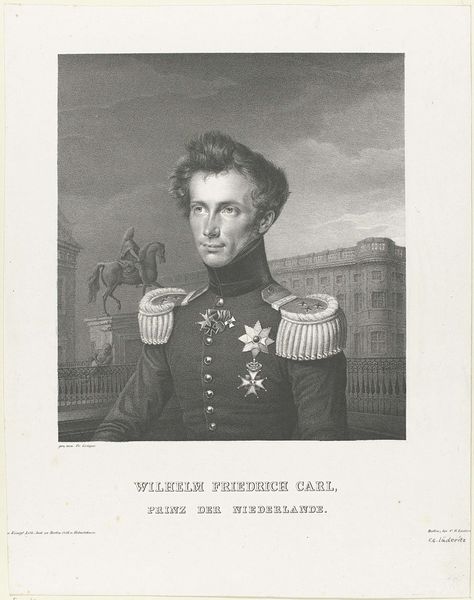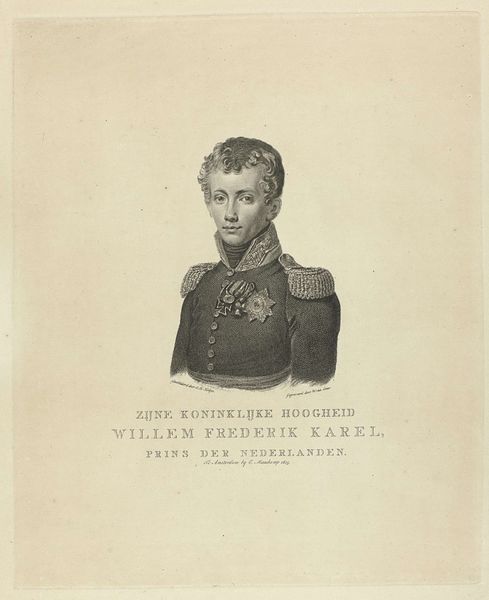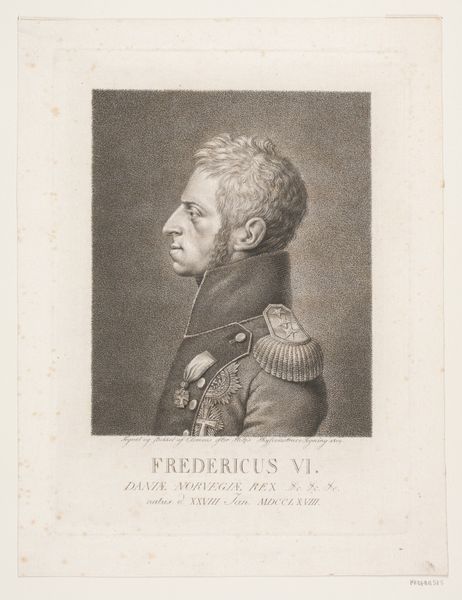
print, engraving
#
portrait
#
neoclacissism
# print
#
old engraving style
#
19th century
#
history-painting
#
engraving
Dimensions: height 164 mm, width 119 mm
Copyright: Rijks Museum: Open Domain
Editor: So, here we have "Portret van Willem I Frederik, koning der Nederlanden," from 1814, by Jacob Ernst Marcus. It's an engraving, and the detail is quite striking, especially the uniform. What story do you think it tells? Curator: Well, this print isn't just about Willem Frederik. It's deeply connected to the political climate of the Netherlands at the time. Consider its creation date: 1814. Napoleon had just been defeated, and there was a powerful desire to re-establish a sense of national identity and legitimacy, including ideas tied to nationalism and patriotism. Editor: Right, the end of French rule. So, the portrait is a statement? Curator: Precisely! These portraits of leaders served to legitimize their rule and project a certain image. Notice his stern gaze and the opulent uniform? These details project power and authority. But let's think about where this image would have been seen and consumed at the time, for example. How do you think its circulation influenced the public perception of the monarchy? Editor: I imagine prints like these would have been quite accessible, circulating widely among different social classes. So, the image becomes a powerful tool for shaping public opinion, maybe even forging a sense of unity after a period of upheaval. Curator: Exactly. The image works to solidify Willem Frederik’s image and the role of the monarchy as stable and enduring in this new socio-political moment. Now, I’m wondering, with the distance of time and a different societal lens, how we respond to that representation of power and identity. Does it still resonate? Editor: I see him less as an imposing figure and more as a relic of a particular moment in history, a visual record of a power play. It highlights the construction of identity for political ends. Curator: That’s a valuable observation. Understanding the context really changes how we see it. It ceases to be a simple picture and becomes a window into history and politics. Editor: Definitely gives me a lot to think about, understanding that even seemingly simple portraits like these had profound impacts on society. Curator: Absolutely, and that's why analyzing art through the lens of history and society is so essential.
Comments
No comments
Be the first to comment and join the conversation on the ultimate creative platform.
